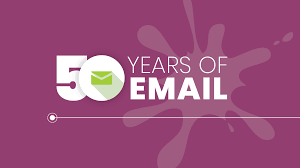Email is one of the most popular forms of communication on the internet today. It is a powerful tool that has revolutionized how we communicate with each other both personally and professionally. Over the years, email has evolved from a simple text-only message to a multimedia experience. In this article, we will explore the evolution of email communication and how it has changed our lives.
The Beginning of Email Communication
The first email was sent in 1971 by Ray Tomlinson, a computer programmer who was working on the ARPANET (Advanced Research Projects Agency Network). At that time, email was a simple text-only message sent from one computer to another. The content of the message was limited to only text and there were no images or videos to accompany it.
As email communication became more popular, people started to realize that they could include more information in their messages by using formatting such as bold, italic, and underline. This formatting capability was made possible by the introduction of the Multipurpose Internet Mail Extensions (MIME) in 1992.
The Introduction of HTML Emails
The introduction of HTML (Hypertext Markup Language) emails in the mid-1990s changed the way people used email. HTML allowed users to include images, videos, and other multimedia elements in their messages. This created a more engaging and immersive user experience.
HTML emails also allowed organizations to send out colorful newsletters and promotional messages to their customers. This was a game-changer for marketers who could now create visually appealing messages to attract their target audience.
The Emergence of Mobile Devices
The emergence of mobile devices such as smartphones and tablets has had a significant impact on email communication. With the increasing use of mobile devices, emails became more accessible to people on the go. This shift in email communication led to the development of responsive design, which allowed emails to adapt to the screen size of the device it was being viewed on.
Nowadays, emails are designed to be mobile-friendly with optimized images and readability. Emails can also be accessed through various email clients and apps, making it more convenient for users to read and respond to messages.
The Rise of Artificial Intelligence
With the rise of artificial intelligence (AI), email communication has evolved to become even more personalized and engaging. AI-powered chatbots can now be used within email platforms to deliver tailored content and services to users.
For instance, a chatbot can be integrated into an email platform to help users schedule appointments, answer FAQs, and provide personalized recommendations. This has made email communication more interactive and effective.
The Future of Email Communication
The future of email communication looks promising with the integration of various technologies such as voice recognition, augmented reality, and virtual reality. These technologies have the potential to create even more engaging and immersive user experiences.
Moreover, as more and more people become digital natives, email communication will continue to evolve, with new forms of communication being introduced and old ones being phased out.
Conclusion
Email communication has come a long way since the first text-only message was sent in 1971. The evolution of email communication has allowed for more engaging and immersive communication experiences. From HTML emails to mobile-responsive design and AI-powered chatbots, email communication has undergone tremendous transformation over the years and continues to do so. As new technologies emerge and people become more digital-savvy, email communication will remain a significant part of our lives.
FAQs
Text-only emails can be effective in certain situations, especially when the goal is to communicate information in a simple and concise manner. However, with the rise of multimedia elements, adding images and videos to emails can enhance the user experience and engagement.
Responsive design in email communication refers to designing emails that adapt to different screen sizes and devices. This helps improve the readability and usability of emails, especially those viewed on mobile devices.
Email communication has become a significant part of our lives, and it is not likely that it will become outdated anytime soon. With the emergence of new technologies, email communication will continue to evolve to become even more engaging and personalized.
AI-powered chatbots have allowed for more personalized and interactive email communication. Chatbots can deliver tailored content and services to users, making email communication more effective and engaging.
The future of email communication looks promising with the integration of various technologies such as voice recognition, augmented reality, and virtual reality. These technologies have the potential to create even more engaging and immersive user experiences.


